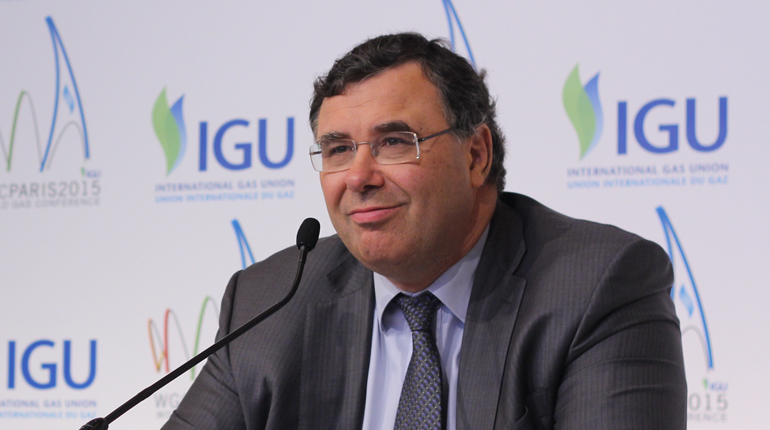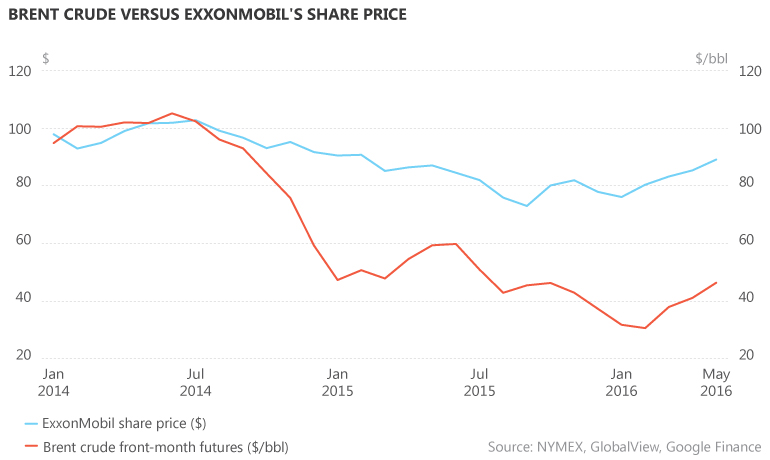 Chief Executive Patrick Pouyanné is positioning Total to take advantage of future Asian demand. (Interfax)
Chief Executive Patrick Pouyanné is positioning Total to take advantage of future Asian demand. (Interfax)
France’s Total plans to become a leading LNG provider for the Asia Pacific market in the next decade. The company’s aim is to position itself for when the region’s LNG surplus is expected to evaporate while demand in established markets rebounds and new buying centres emerge in Southeast Asia.
Analysts say Total’s latest deal with Oil Search in Papua New Guinea (PNG) is a logical next step for the French major. The move puts it at the heart of an emerging LNG supply axis for growth markets while also improving the prospects for its planned Papua LNG project to become one of the region’s lowest-cost producers.
"In recent years, Total has expanded its LNG position through M&A, particularly in the Pacific. Between 2009 and 2013 it made a number of acquisitions to enter LNG projects at the early stage before the scope was well defined, such as Ichthys, Yamal and Papua LNG," Saul Kavonic, senior oil and gas analyst for Australasia at Wood Mackenzie, told Interfax Natural Gas Daily.
"What we’re seeing now with this deal is [Total] further increasing its stake in the Papua LNG project. Total is set to emerge from a period of major capital investment with strong cash flow growth, so we’re not surprised it’s taking the opportunity to make further acquisitions for new potential LNG supply projects such as this one," Kavonic added.
Under a memorandum of understanding linked to Oil Search’s recent takeover bid for InterOil, Total is set to secure 60% of InterOil’s Petroleum Retention Licence (PRL) 15 and 62% of its other exploration assets in PNG. The arrangement will see the companies collaborate on Papua LNG project – which is expected to be commissioned in 2022 – and Oil Search’s stake in the ExxonMobil-led operational PNG LNG project.
The deal will "drive the future development of the Papua LNG project, a low-cost onshore LNG project close to Asian markets", according to Patrick Pouyanné, Total’s chairman and chief executive.
A Total spokeswoman told Interfax Natural Gas Daily that "Papua LNG is one of the next wave of Total’s major projects that will sustain our production into the next decade. Following the startup of [...] Ichthys in 2017 and Yamal at the end of 2017, Papua LNG will be yet another building block in our global, integrated LNG portfolio."
Total’s LNG volumes
Total produces 2.15 million barrels of oil equivalent per day (MMboe) of oil and gas, of which 0.24 MMboe/d comes from the Asia Pacific region.
It has a 41.9% stake in Indonesia’s 22.2 mtpa Bontang project, a 27.5% stake in Gladstone LNG on Australia’s east coast and a 30% stake in the Ichthys project being built with Japan’s Inpex at the Australian port of Darwin. Total is also a stakeholder in Russia’s Yamal LNG, which will provide another supply resource for Asia.
"We think this deal could increase Total’s LNG supply volumes by up to 1.5 mt by 2025 if Papua LNG was to proceed. That would be approximately a 20% increase in its LNG volumes from the Australasian region," Kavonic said.
The MOU also raises the possibility for collaboration between Papua LNG and the 6.9 mtpa PNG LNG project, including a possible feed-in to the latter’s third train. Exxon is expected to take an FID on the third train by late 2017.
"The transaction with Oil Search not only brings us additional equity in the Elk/Antelope fields on PRL15, but also several exploration blocks containing promising gas discoveries. Once the transaction is finalised, we will move forward with discussions with PNG LNG to unlock synergies between the existing facilities and Papua LNG," the Total spokeswoman said.
Even without collaboration, Wood Mackenzie believes Papua LNG is a sound prospect. "We see Papua LNG as a viable project on a standalone basis. Both it and PNG LNG Train 3 are among some of the lowest-cost pre-FID projects in the world. That said, there could be scope for substantial synergies if those two projects were to collaborate and combine," Kavonic said.
Another facet of the MOU is Total’s stated interest in attracting "LNG buyers and potential new participants" to take equity shareholdings in Papua LNG, reflecting the more prominent role buyers are having as the LNG market transforms, and contracts become shorter and more flexible.
"Having a strong offtaker as part of the project can help with sanction. Total itself is a major LNG portfolio player, which facilitates marketing of its projects, alongside creating opportunities to optimise its existing portfolio," Kavonic said.







Talk to us
Natural Gas Daily welcomes your comments. Email us at [email protected].